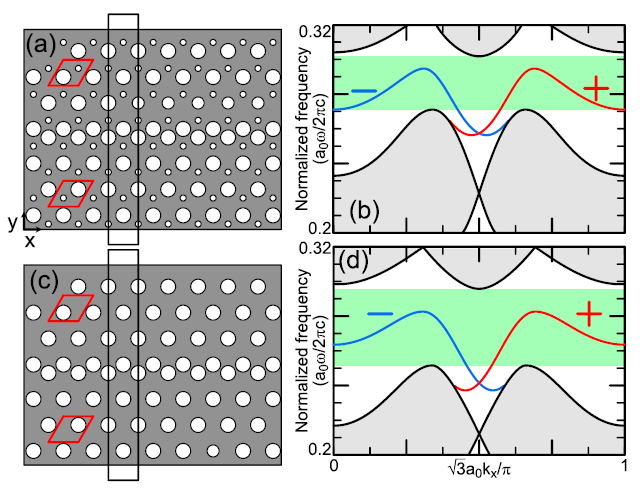Septembre, I.; Leblanc, C.; Hermet, L.; Nguyen, H. S.; Letartre, X.; Solnyshkov, D. D.; Malpuech, G. Design of a room-temperature topological exciton-polariton laser in a ZnO/TiO2 photonic crystal slab Phys. Rev. B 107, 155304 (2023) https://doi.org/10.1103/PhysRevB.107.155304

We propose theoretically a scheme to get a room-temperature two-dimensional topological exciton-polariton laser with propagating topological lasing modes. The structure uses guided modes in a photonic crystal slab. A ZnO layer provides strong excitonic resonances stable at room temperature. It is capped by a TiO2 layer pierced by a triangular lattice of air holes. The exciton-polariton modes of the three-dimensional structure are computed by solving numerically Maxwell’s equations including the excitonic response. The designed triangular lattice of circular air holes shows a transverse electric band gap. The triangular lattice of air holes is shown to be well described by a staggered honeycomb tight-binding lattice, associated with valley Chern numbers defining the interface states. The interface between two shifted triangular lattices of air holes supports two counterpropagating modes lying in the gap of the bulk modes, analogous to quantum pseudospin Hall interface states. These modes show orthogonal polarizations. They can be selectively excited using polarized excitation and are well protected from backscattering. These modes can benefit from the exciton-polariton gain at room temperature because of their sufficiently large exciton fraction and favorable position in energy. The strong localization of these propagating modes makes them suitable to host topological lasing triggered by a nonresonant pump localized on the interface.

